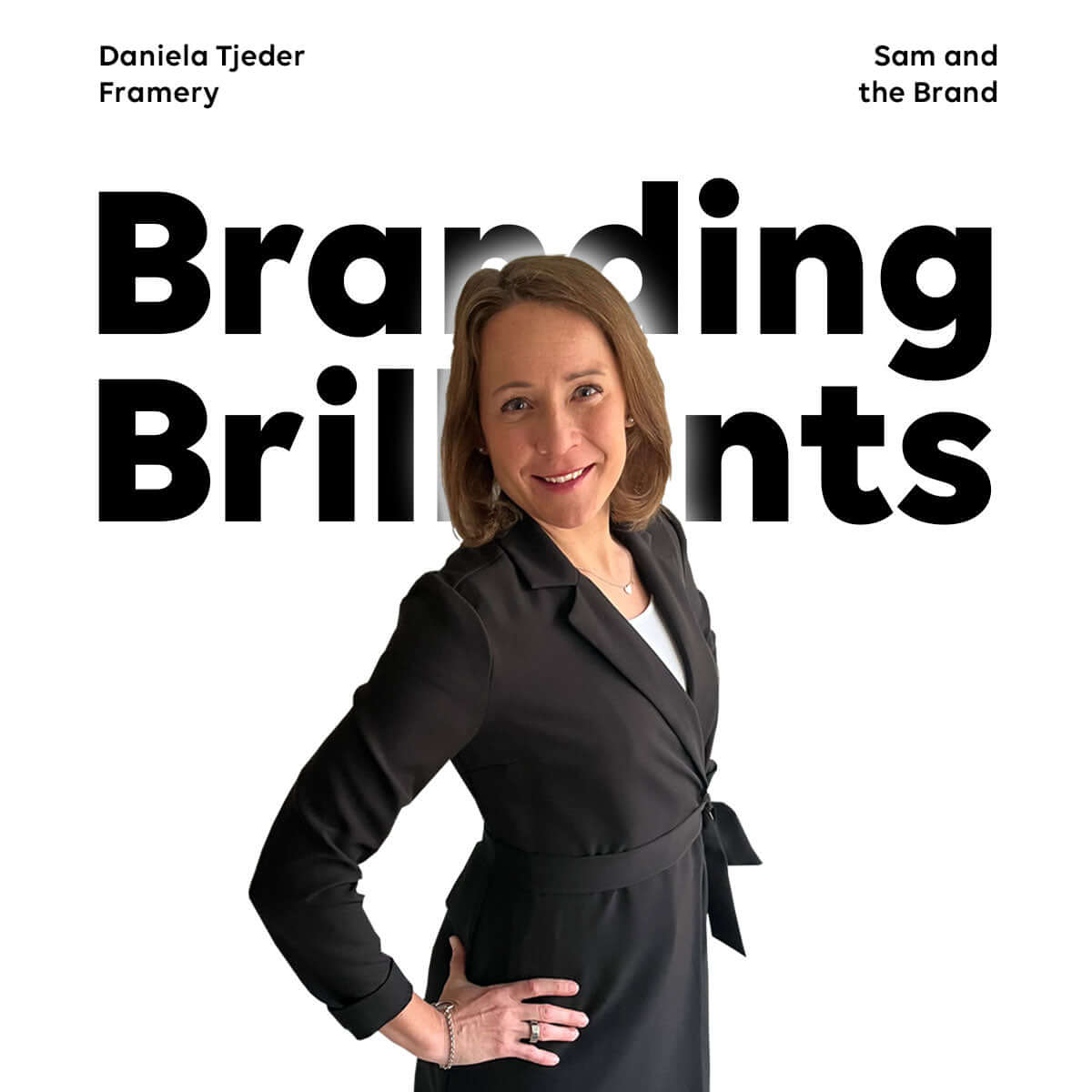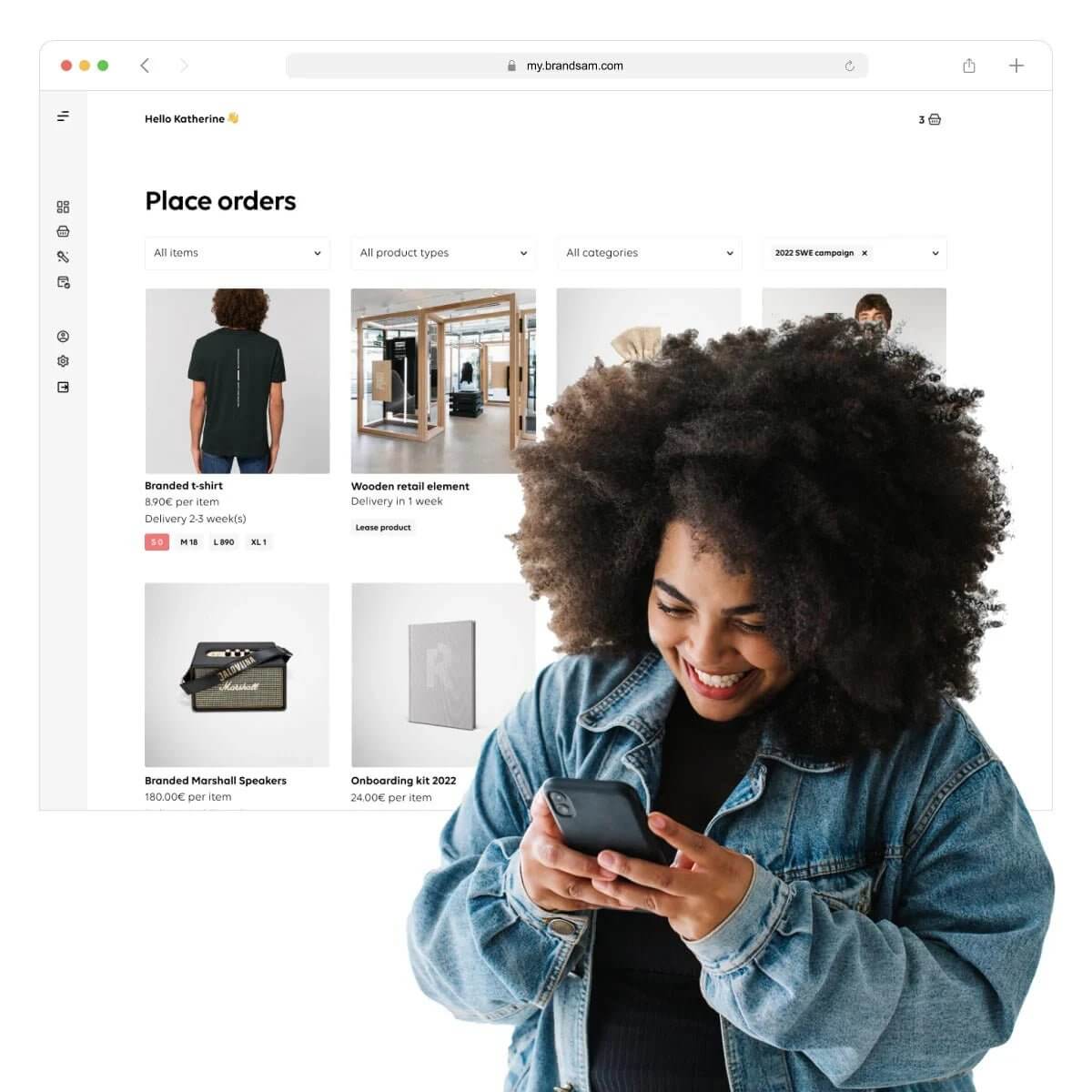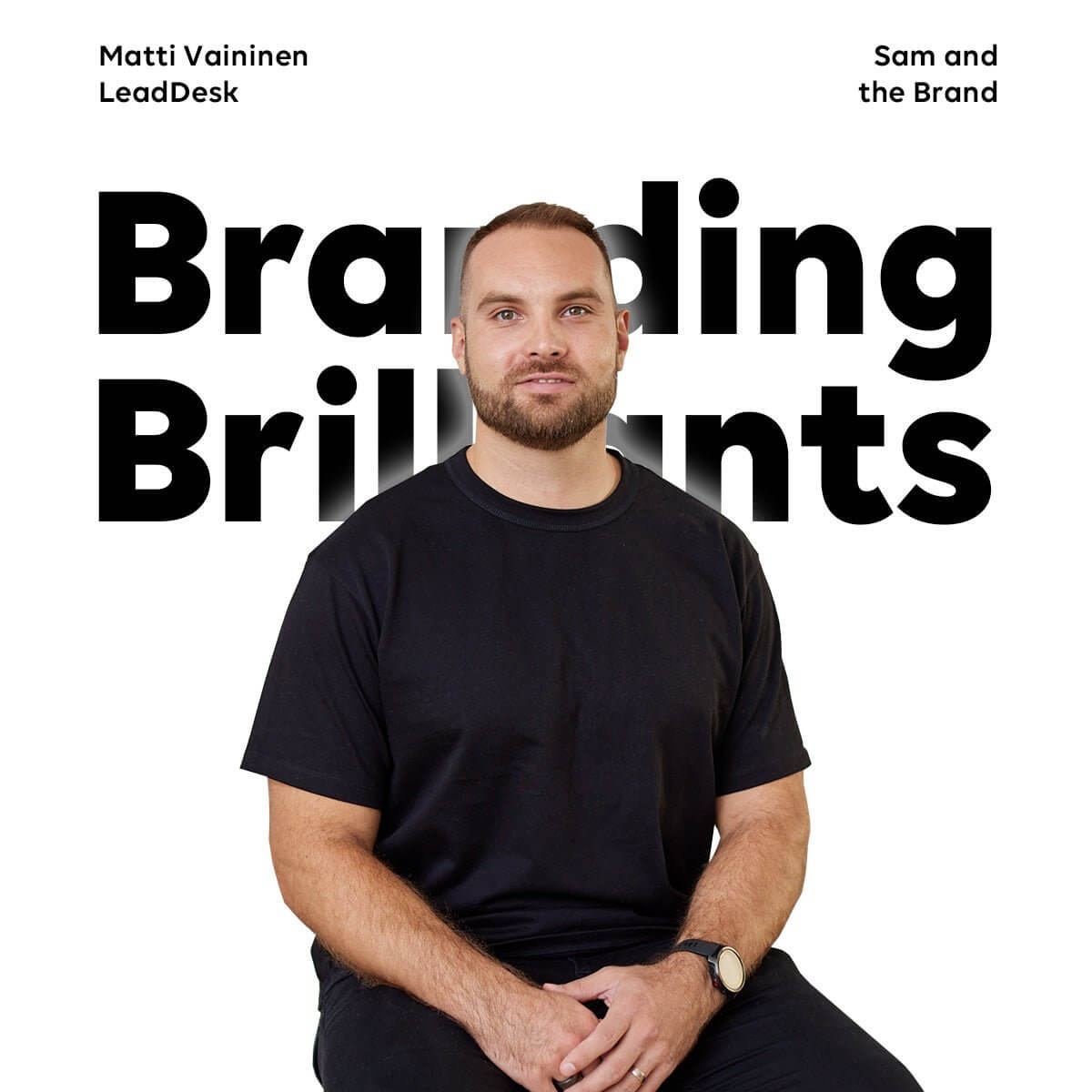Branding Brilliants – Mikko Koskinen
- 13 min reading time

He loves good storytelling. He doesn’t do anything half-heartedly. Instead, this man puts himself out there, so much so, that his nude figure is quite well-known by whisky and gin lovers in Berlin.
With a background in engineering, Mikko Koskinen has become a master brand builder. He is one of the founding fathers of Kyrö Distillery Company, a Finnish rye distillery founded in a sauna in 2012. More specifically, Mikko is the man behind the brand. Recently, Mikko started using his branding skills to solve the climate crisis through the oceans at Running Tide. Running Tide works with the ocean to remove carbon at scale.
It doesn’t really matter what parameters you investigate, Mikko is remarkable. Dialling in from Reykjavik early on a Monday morning, we were able to have a 30 min chat with him - here are some of the questions that we slipped into the conversation.
How did it all start?
“I didn’t expect to be in charge of Kyrö’s brand. The plan was that I would handle it until we found someone else, someone better, but I ended up working on it.”
“My background is in mechanical engineering and industrial design. This has led me to value product design and consumer experience. I also have a background in stand-up comedy which has given me a crash course in storytelling. So, in terms of branding, I started to look at it through those lenses; understanding the consumer and creating a story that matched that understanding.”
How important has branding been for Kyrö’s success?
“We had quite a big budget for brand strategy. I believe we used 10% of the initial investment for brand identity and guidelines whereas 90% went into machinery and the likes. That brand investment has multiplied the value of the company and without it, we wouldn't be where we are now.
I can say this with some certainty and I have a good benchmark: during the same time that we started, a company called Hernö Gin set up their business in Sweden. They focused on the craftsmanship of the whole process: creating the product, bottling it and having a graphic designer create nice packaging.
Their product is excellent, they have won the same awards and even more awards than we. They have received a similar amount of publicity as Kyrö. But we managed to set our price point 20% higher and we grew faster. Looking at domestic turnover rates alone we are four times bigger and I believe it’s due to the big investments in the brand. Those investments paid off!”
Back in the early days of Kyrö, what were your expectations and was there something that surprised you?
“To be honest, back then I was afraid that we weren’t going to be able to create a credible brand. But we pulled it off! What surprised me the most was that while branding in the spirits industry is quite important in general, it felt like very few companies did it well. Branding seemed to be nothing but a technical exercise done by these big houses and those brands often turn out much weaker compared to a brand of a branded house. A branded house is able to maintain a strong ideology and execute on the vision systematically.”
“Another thing I found interesting was that the world of spirits is actually quite complicated and unknown to the masses. People know of whisky but that's pretty much it. They do not know how whisky is made, that there are different kinds of whisky or that not all whisky is smoky.
We quite intuitively started bringing some familiarity to the mix by adding the design angle. My own background in industrial design had a huge impact on us choosing that path. It was very fascinating to have the Scandinavian minimalism together with the values of a premium brand and then to take them into a whole new environment and context. This was how we created the attributes of a premium alcohol brand.
In retrospect, all of that makes perfect sense and worked quite well. It made the concept easier to approach and allowed us to reach a target group that wasn't served very well by the alcohol industry.”
Marketing professionals are expected to make magic happen with very small budgets - is that realistic?
“One problem with marketing and branding is that it is so demystified, unlike coding for instance. There is a common misconception that everyone can take a picture. Then the question arises: why should you pay 20k for a picture that you could take yourself? The answer to that question is quite simple: because the more expensive picture is probably better and your ROI will be greater.
I guess you could be able to create a brand with zero budget if you had the right team and this applies to everything. Can you create new tech without investment? - yes, if you have the right person working on it. But your likelihood to succeed grows when your resources grow.¨
“Why should you pay 20k for a picture that you could take yourself? The answer to that question is quite simple. Because the more expensive picture is probably better and your ROI will be greater.”
“We made both low-budget videos and expensive videos. The low-budget videos cost from 3k to 5k. In these videos we featured our Kyrö story and the videos did receive a nice amount of views, 5000-10000 views depending on the video. So that puts the cost per view at about 1 euro. The videos were ‘ok’ or ‘good’ even, but they certainly didn’t take your breath away. Then we upped the stakes a bit: we made a video with a 120k budget. It received over 2M views.
This means that the cost per view was a tenth of the earlier case. Obviously, one has to add the media costs to that campaign as well, but still, the cost is about 20 cents per view. So, since you asked, in terms of branding, in terms of reach and impact, the more expensive campaign worked 5 times better. The investment was huge but worthwhile.
We saw that people remembered our video of naked Finnish men but they were not able to connect that to the product at the point of sale. So we made a life-size cardboard cutout of me in the nude, and incidentally, people started connecting the video’s naked men to our products.
For anyone struggling with these kinds of decisions, I would say that it is a little bit like ski jumping. If you start holding back at the take-off ramp, you are not going to fly far. So you are able to jump but you are not competing with the others. I guess the question is; do you want to compete or just participate? The risk may be scary but taking it is the only way to compete.”
What could we all learn from Kyrö’s international endeavours?
“New companies often feel the need to break through in their home market before going international. Once you’ve done that and start moving on, you may quickly find that the ways to succeed abroad are not the same as at home. Or vice versa. This happened to Kyrö.
We had a story and a brand that worked in Finland but didn’t get traction abroad. The brand needed quite a bit of iteration and localisation. If I knew then what I know now I would lose the reins a little bit and give some space to manoeuvre. I was trying to control the brand too much and maintain integrity at a time when it clearly needed a bit more trial and error to find a market fit. So, having the approach that ‘ok, this works in Finland, let’s see how we can make it work abroad’ will get you to your goal a lot faster.”
What do you do to find a market fit?
“In order to find a market fit I ran a consumer study where our management team went out and interviewed end-consumers in Finland, Germany, the UK and the US. We used that data to revamp the brand and I then went to Berlin to manage the go-to-market. I felt that it was necessary for me to go there in person. It made the whole thing faster as I was able to make decisions on the spot and no time was wasted in asking HQ. I was also better equipped to report back on the results of all the iterations we made.”
“The brand needed quite a bit of iteration and localisation. If I knew then what I know now I would lose the reins a little bit and give some space to manoeuvre. I was trying to control the brand too much and maintain integrity.”
“During the iteration process, we understood that we had to simplify the story about Finland and use some stereotypes that people were familiar with. If we hadn’t done that the target group would have been far too small for any type of success. Also, while making new marketing assets we had to make sure that people were talking about the product with the right words.
Another key learning was that it wasn't enough to have the bottle behind the bar. This may have worked back in the day when a bartender got excited about a new product but with today’s craft boom, there are too many new products entering the market to get any excitement from a bartender. We needed to power up our marketing.
One practical thing we did in terms of marketing materials is that we were able to tie our display assets better with our branding. For example, we saw that people remembered our video of naked Finnish men but they were not able to connect that to the product at the point of sale. So we made a life-size cardboard cutout of me in the nude, and incidentally, people started connecting the video’s naked men to our products.“
What were your growing pains in terms of brand management?
“The learnings and the iterations we made in Germany would never have happened if we had relied on distributors. Partly, because they are unable to make strategic decisions but also because a lot of the practicalities go wrong when you outsource brand management.
For example, we were managing our marketing materials manually per email and there were quite a few mistakes when a representative of a distributor was handling it. Now we have a simplified process and clear ownership with one person in charge of the materials for any given market. It’s easier to maintain integrity, stay agile and avoid mistakes.”
Do you think branding can influence decision-makers?
“Absolutely. Branding has the power to make things bigger. Get people to hear you and, ultimately, want to take part in what it is that you are doing.“
“Also, branding might even be the thing that makes or breaks it, as may be the case with Running Tide. This is a project in which we are navigating a new domain. It’s an abstract concept in a new industry that is not yet regulated. It is extremely important for us to gain credibility and to build an environment that conveys that.
In practice, it’s about consistency. Running Tide is operating at sea and we want our language and visuals to remind everyone of that. Our copy will have references to the language of sailors and we want to clothe our team with gear that has roots at sea. Our story and our brand need to be visible in what we do and with whom we decide to work. And naturally, all this ties back to our values. We want to help anyone we cooperate with becoming carbon neutral.”
What does branding mean to you today?
“I usually say that a brand is a world that the company creates but doesn’t control. Consumers and stakeholders tap into the brand through the product, the service, and the image in different social environments. In terms of business, branding is extremely important. The value of a product and a company is a sum of many elements. The brand is essentially that one thing that compiles everything and unifies the experience. If you succeed with branding the whole thing will be worth a whole lot more than the sum of its parts. That said, a brand cannot save you. A good story is not enough if the product or technology is not top-notch.”
"Brand is a world that the company creates but doesn’t control."
“I have come to the conclusion that a growing brand needs a certain level of flow. At times you need to tighten the reins and reclaim some control and at other times you give a little more space to experiment. You don’t want to be too strict all the time. I believe that’s why we didn't grow fast enough with Kyrö.
People are often too focused on protecting the brand instead of testing new ideas, updating the value proposition slightly and letting the brand grow. So, a key learning for all brand builders is that don’t worry about changes, you need the flow.”
Mikko’s three branding learnings and insights:
-
The higher up in the decision-making ladder people understand the value of the brand the more likely you are to succeed.
-
Don’t scale up before you have validation on the brand-market fit.
- If there’s only control, the brand will eventually stagnate, if there is no control, the brand will disintegrate.


